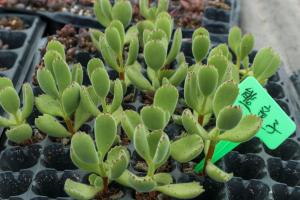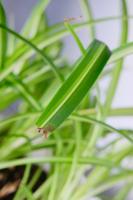Should I Cut Off Brown Tomato Plant Stems?
Tomatoes are a popular vegetable and growing them can be a rewarding experience. However, like any plant, they are susceptible to pest and disease problems. One common issue tomato growers face is brown stems. When you notice your tomato plant stems turning brown, the first thing that may come to mind is whether or not you should cut them off. The answer depends on several factors, which we will discuss in this article.
Reasons for Brown Stems on Tomato Plants
Before deciding whether or not to cut off brown tomato plant stems, it's important to understand the reason for the discoloration. There are several possible causes, including:
Fungal Infections: Fungal infections can cause brown or black spots on tomato plant stems, which can spread and cause the stems to rot. Fungal infections are often caused by overwatering, poor drainage, or high humidity.
Blights: Tomato blights are diseases that cause the foliage and stems of tomato plants to turn brown or black. Two common blights affecting tomatoes are early blight and late blight.
Bacterial Infections: Certain bacterial infections can cause brown spots or streaks on tomato plant stems.
Sunscald: Tomato plants can develop brown or white patches on the stems or fruit if they are exposed to direct sunlight for too long.
Insect Damage: Tomatoes can be damaged by a variety of insects, including aphids, whiteflies, and spider mites. Insect damage can cause the stems to turn brown or black.
Should You Cut Off Brown Tomato Plant Stems?
The decision to cut off brown tomato plant stems depends on the severity and cause of the discoloration. In some cases, removing the affected stems can help prevent the spread of disease and save the plant. In other cases, cutting off the stems may not be necessary and could actually do more harm than good.
If the brown stems are caused by a fungal infection or blight, it's important to remove the affected parts of the plant as soon as possible to prevent the spread of the disease. Use clean pruning shears and cut the stem at least 1-2 inches below the diseased area. Make sure to disinfect the pruning shears between cuts to prevent spreading the infection to other parts of the plant.
If the brown stems are caused by sunscald or insect damage, cutting off the affected parts of the plant may not be necessary. These types of damage are often cosmetic and won't affect the plant's overall health or yield. Instead, focus on preventing further damage by providing shade or using insecticides.
It's important to keep in mind that cutting off brown tomato plant stems can be stressful for the plant and may slow down its growth or yield. If you are unsure whether or not to cut off the affected stems, consult a gardening expert or extension agent for advice.
Preventing Brown Stems on Tomato Plants
The best way to prevent brown stems on tomato plants is to maintain good plant health and prevent pest and disease problems. Here are a few tips:
Water Properly: Tomato plants need consistent moisture but don't like to be overwatered. Water deeply and frequently but allow the soil to dry out slightly between waterings to prevent fungal infections.
Provide Good Drainage: Make sure your tomato plants are growing in well-draining soil or containers to prevent water from pooling around the roots and causing root rot.
Space Plants Properly: Overcrowding plants can lead to poor air circulation, which can increase the risk of fungal infections and blights.
Use Disease-Resistant Varieties: Look for tomato varieties that are resistant to common diseases like early blight and late blight.
Monitor for Pest Problems: Check your tomato plants regularly for signs of insect damage and treat them promptly to prevent infestations from getting out of control.
Following these tips can help keep your tomato plants healthy and prevent brown stems from occurring. If you do notice brown stems on your plants, don't panic. Assess the situation carefully and decide whether or not cutting off the affected parts of the plant is necessary. With a little care and attention, your tomato plants can continue to thrive and produce delicious fruit.

 how many times do yo...
how many times do yo... how many planted tre...
how many planted tre... how many pine trees ...
how many pine trees ... how many pecan trees...
how many pecan trees... how many plants comp...
how many plants comp... how many plants can ...
how many plants can ... how many plants and ...
how many plants and ... how many pepper plan...
how many pepper plan...






























